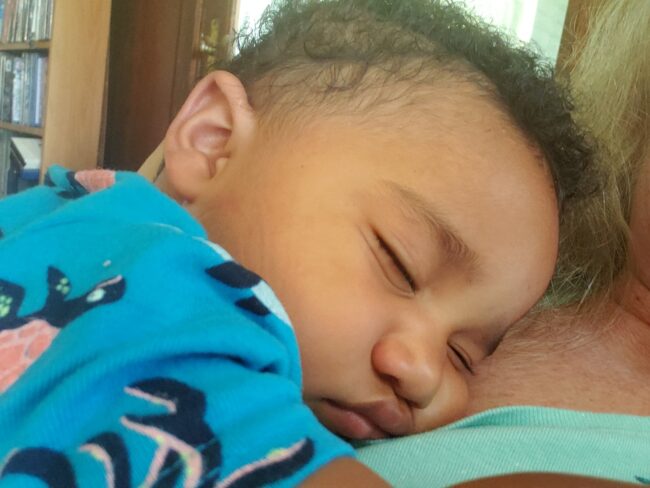After the lights are low and the books are put away, try using a guided meditation to help ease the transition to sleep. Bedtime meditations can be very helpful to calm down the nervous system and decrease a child’s level of stress hormones. Tuck your child into bed and gently rub their back or simply stand nearby and use your voice to guide them into slumber. Try one of these guided mindfulness stories at your child’s next bedtime:
The Floaty Boat
For this exercise begin by encouraging your child to imagine him or herself wrapped in a warm blanket in the bottom of a little boat. You might want to place the boat near to the banks of a small river to add a sense of safety, perhaps put yourself in the boat, too. You can begin, “We are snuggled under a fleecy blanket, in our little boat, under a starlit sky.” Bring different senses into play—the gentle bobbing sensation, a soft breeze, rustling leaves, the murmur of the water as it flows over rocks. Imitate watery sounds with words such as hush and shush as you gently drift downstream—and your child gently drifts off to sleep.
Sleepy Cats (or Any Other Snuggly, Sleepy Animal)
Begin by quietly describing and imagining a cat, maybe a small, white sleepy kitten, or a big, silver tabby, using gentle words such as soft and fluffy, and give it a sleepy sounding name such as “Dreamy.” Then talk slowly about how comfortable Dreamy feels, how she purrs and stretches as she snoozes on the bed. Other cats may also climb onto the bed. Repeating words and phrases suggestive of sleep can be really effective at bedtime. It’s a technique used to great effect by Swedish psychologist Carl-Johan Forssén Ehrlin in the bestselling book The Rabbit Who Wants to Fall Asleep.
Adapted from “7 Guided Meditations to Help Your Child Fall Asleep” at https://www.mother.ly/amp/guided-meditations-to-help-your-child-sleep-2559472493
Related Resource(s)
- Resource Guides: Healthy Sleep Habits
- Resource Guides: Mindful Parenting

